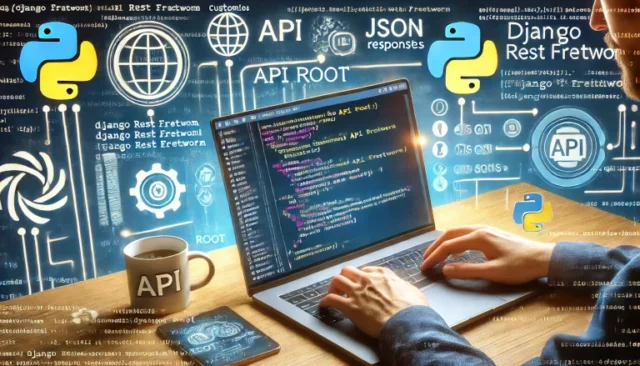Django REST Framework (DRF) provides a powerful and flexible toolkit for building RESTful APIs. By default, the API root endpoint in DRF presents a list of available endpoints in a structured format. However, many developers need to customize the API root to align with their project requirements, improve user experience, or enhance API documentation. This guide will walk you through the process of customizing the API root in Django REST Framework, ensuring a seamless and professional API structure.
What is API Root in Django REST Framework?
🔹 The API root is the entry point of a DRF-powered API, usually displaying a list of available endpoints.
🔹 It is automatically generated when using DefaultRouter.
🔹 Customizing it helps improve API usability, branding, and clarity.
By default, DRF’s API root is controlled by the router and the automatically generated schema. However, to have complete control over the API response structure, you may need to override the default API root view.
How to Customize API Root in Django REST Framework?
1. Creating a Custom API Root View
Instead of using DefaultRouter, you can manually define an API root view. First, create a view that returns a structured JSON response:
from rest_framework.decorators import api_view
from rest_framework.response import Response
from django.urls import reverse
@api_view(['GET'])
def custom_api_root(request, format=None):
return Response({
'users': reverse('user-list', request=request, format=format),
'posts': reverse('post-list', request=request, format=format),
'comments': reverse('comment-list', request=request, format=format)
})
This function-based view provides a customized API root response where each endpoint is explicitly defined.
2. Updating URL Configuration
Modify urls.py to use the custom API root view:
from django.urls import path, include
from .views import custom_api_root
urlpatterns = [
path('', custom_api_root, name='api-root'),
path('users/', include('users.urls')),
path('posts/', include('posts.urls')),
path('comments/', include('comments.urls')),
]
This ensures that the custom API root view is accessible when the API is accessed at the base URL (/).
Alternative Approach: Customizing API Root Using Routers
If you prefer to use DRF’s DefaultRouter but still need a custom API root, override the get_api_root_view() method:
from rest_framework.routers import DefaultRouter
from rest_framework.response import Response
from rest_framework.reverse import reverse
def custom_api_root_view(self, request, *args, **kwargs):
return Response({
'users': reverse('user-list', request=request, format=kwargs.get('format')),
'posts': reverse('post-list', request=request, format=kwargs.get('format')),
'comments': reverse('comment-list', request=request, format=kwargs.get('format'))
})
class CustomRouter(DefaultRouter):
def get_api_root_view(self, *args, **kwargs):
return custom_api_root_view
router = CustomRouter()
Now, register the viewsets and include the router in urls.py:
router.register(r'users', UserViewSet)
router.register(r'posts', PostViewSet)
router.register(r'comments', CommentViewSet)
urlpatterns = [
path('', include(router.urls)),
]
This method retains the benefits of DefaultRouter while providing a customized API root view.
Troubleshooting Common Issues
1. Custom API Root Not Loading?
✔ Ensure urls.py correctly maps to custom_api_root.
✔ Restart the server after modifying views and URLs using:
python manage.py runserver
2. URL Names Not Resolving in reverse()?
✔ Check that each viewset has a properly defined basename in the router.
✔ Ensure URL patterns use name='model-list' for reverse mapping.
3. DefaultRouter Still Showing Old API Root?
✔ Ensure you override get_api_root_view() correctly.
✔ Clear Django’s cached routes by restarting the server.
Customizing the API root in Django REST Framework enhances the usability and clarity of your API. Whether using a function-based view or modifying DefaultRouter, these methods help create a professional and structured API endpoint. With a well-customized API root, developers and clients interacting with your API can navigate endpoints more effectively.
Start customizing your DRF API root today to improve API documentation and user experience!
